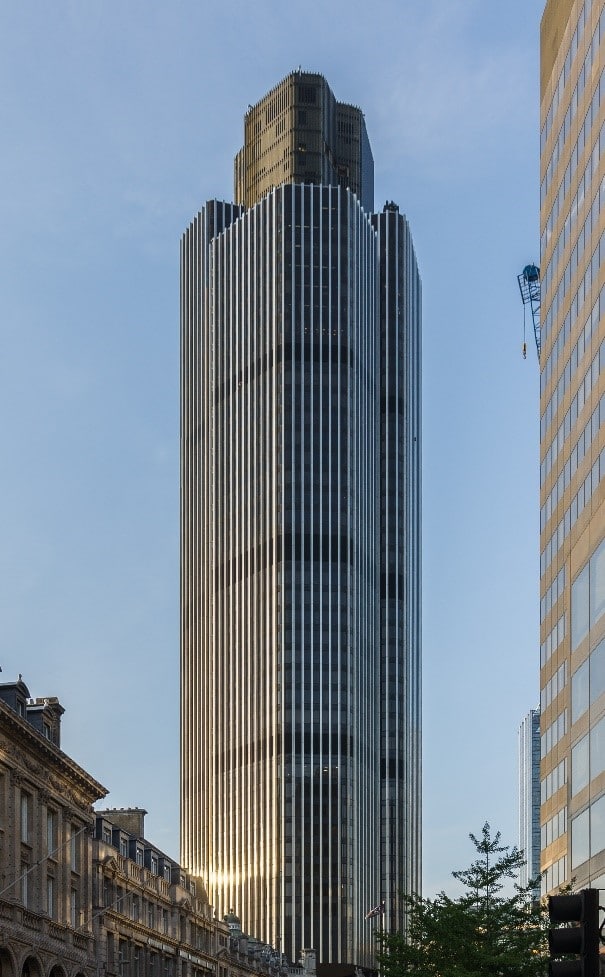Originally published on CEBM.net on 13 April 2021
The Carbon Impact of Construction: pollution, embodied energy, and alternatives to concrete
Elizabeth Tuck
MSc Comparative Social Policy, University of Oxford
Correspondence to [email protected]

The post-COVID urban environment, and how we might build ‘healthier’ cities for future populations with lower rates of carbon emissions, and pollution are increasingly the focus of today. The following report provides a brief overview of embodied energy in the construction process, supplementary cementitious materials, lightweight concrete (sometimes called lower density concrete), and the impact that substituting clinker in cement can have on carbon reduction.

Source: Wikipedia
When thinking about the current trend toward ‘net zero carbon emissions’ in popular discourse, the overwhelmingly focus seems to be on operational household energy and its emissions (i.e. the energy required for everyday household operations, such as heating and waste disposal). The built environment, however, has additional sources of pollution outside of merely operational costs, namely in embodied energy, or the energy used in the production of construction materials, the actual building of the structure, and the demolition and disposal of the building. Over the life cycle of a building, operational energy will statistically produce more greenhouse gas emissions. These emissions, however, can generally be offset, or reduced by installing things like heat pumps and smart meters. Embodied energy cannot be treated in the same way- there are no green technologies that can be implemented to offset the carbon emissions from the installation of a Portland cement foundation. Reductions in operational energy are further increasing the relative proportion of embodied energy in the life cycle, underscoring the need to find sustainable alternatives to standard building materials and methods.
Supplementary Cementitious Materials (SCMs)
In 2014, the global construction industry was responsible for 6-7% of anthropogenic carbon dioxide emissions, the majority of that coming from the production of Portland cement clinker. The logic of SCMs is that by replacing clinker in cement (or cement in concrete) with alternate materials, the environmental impact of cement production will be lowered. SCMs can encompass a wide array of other materials, many of which have additional properties of increased durability and strength. Additionally, the appeal of using SCMs is that many of them are industrial by-products that otherwise would be disposed. The use of industrial waste in this way not only lowers the emissions produced by the manufacturing of the cement, but it reduces the impact of waste disposal.
One such example of an SCM is ‘fly ash’, the residue of the non-combustible content of coal. Thermal power plants can produce huge amounts of fly ash, but less than half of this product is used. Since the 1970s, fly ash has been employed as a constituent of cement in the UK. Substituting 25% of Portland cement with fly ash has been shown to reduce greenhouse gas emissions of 25 Megapascals (MPa) concrete blends by 13%, and 32 MPa blends by 15%.
Lightweight Concrete and Aggregates in the UK
Sintered fly ash is also categorised as a ‘lightweight aggregate’ for use in lightweight concrete. Lightweight concrete, in addition to a reduction in the use of Portland clinker, and therefore lower greenhouse gas emissions, can also provide increased thermal insulation, extended moist curing, and increased durability. LYTAG, the UK-based producer of lightweight aggregate, was one of the first companies to harness the power of fly ash for use as an aggregate in structural concrete. Lightweight concrete is suitable for the construction of major buildings, and has been used in such construction as the NatWest Tower in London.
While this report has focused on fly ash as an SCM used in lightweight concrete, there is a wide array of other SCMs, as well as other alternatives to concrete (for example, rammed earth, or plant-based building materials). The key takeaway is that without close attention to embodied energy and the sustainability of the building process, net zero carbon emissions cannot be achieved.
AUTHOR
Elizabeth Tuck is an MSc Student, and Rhodes Scholar in the Department of Social Policy and Intervention at the University of Oxford.
